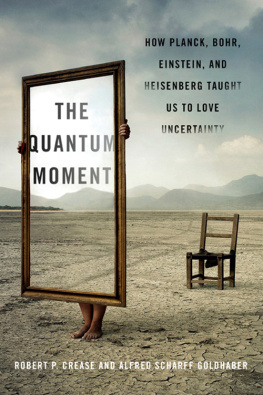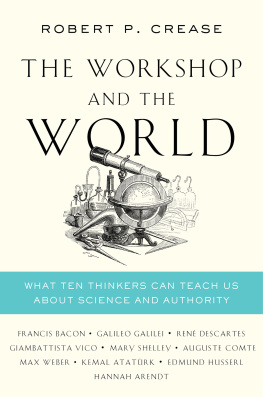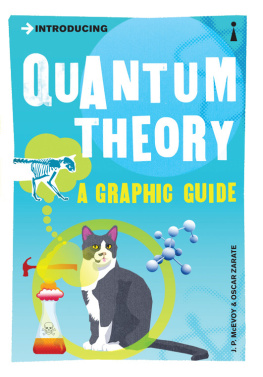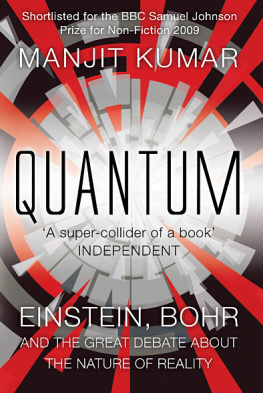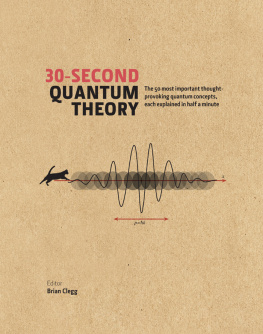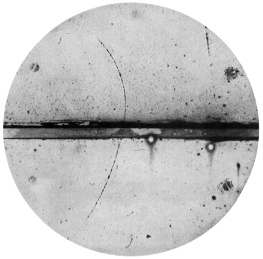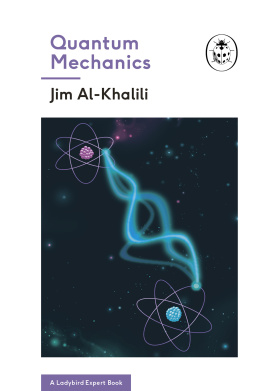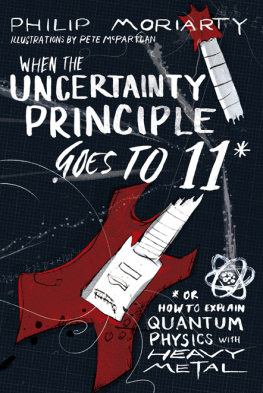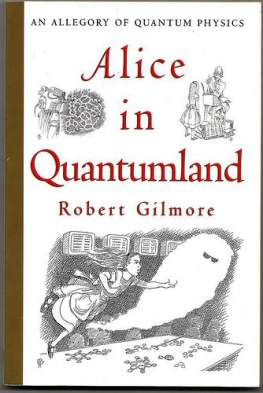
The
Q uantum Moment
How Planck, Bohr, Einstein, and Heisenberg
Taught Us to Love Uncertainty
Robert P. Crease
Alfred Scharff Goldhaber

W. W. Norton & Company
New York London
Copyright 2014 by Robert B. Crease and Alfred Scharff Goldhaber
All rights reserved
First Edition
For information about permission to reproduce selections from this book,
write to Permissions, W. W. Norton & Company, Inc.,
500 Fifth Avenue, New York, NY 10110
For information about special discounts for bulk purchases, please contact
W. W. Norton Special Sales at specialsales@wwnorton.com or 800-233-4830
Book design by Kristen Bearse
Production manager: Devon Zahn
The Library of Congress has cataloged the printed edition as follows:
Crease, Robert P.
The quantum moment : how Planck, Bohr, Einstein, and Heisenberg taught us to love uncertainty / Robert P. Crease, Alfred Scharff Goldhaber. First edition.
pages cm
Includes bibliographical references and index.
ISBN 978-0-393-06792-7 (hardcover)
1. Quantum theoryPopular works. 2. PhysicsPopular works. I. Goldhaber, Alfred S. II. Title.
QC174.123.C74 2014
530.12dc23
2014011427
ISBN 978-0-393-24599-8 (e-book)
W. W. Norton & Company, Inc.
500 Fifth Avenue, New York, N.Y. 10110
www.wwnorton.com
W. W. Norton & Company Ltd.
Castle House, 75/76 Wells Street, London W1T 3QT
To our students, whose spirit and insight enlivened our course and this book
We have an astonishingly broad spectrum of acknowledgments to make. The two of us first met about ten years ago because we had independently submitted proposals for the same grant, and the Provost asked us to work together. Meanwhile, a freshman at Stony Brook named Maaneli Derakhshani was wandering the halls of both our departments in hope of finding a philosopher and a physicist who would lead a course on the philosophy of quantum mechanics. We were the only pair who took him seriously, and started thinking about what might make sense and be accessible to both philosophy and physics undergraduate students. We knew there was plenty of material on the philosophy, history, and science of quantum mechanicsthe field hardly needed morebut the idea of looking at the impact of quantum mechanics on general culture (and vice versa) struck us as appealing. The course more than fulfilled these hopes. We called our course The Quantum Moment, inspired by a 2004 exhibition at the New York Public Library, curated by the science historian Mordechai Feingold, called The Newtonian Moment. The two of us are grateful not only to Stony Brook University for allowing us to teach such an innovative course, but also to the University administrators (Alissa Betz in the Philosophy Department, Pam Burris and Nathan Leoce-Shappin in the Physics Department) for struggling, year after year, with the mechanics of fitting a cotaught course into a demanding curriculum.
In the first iteration of the course, in spring 2006, we were lucky enough to have not only talented and eager students but also several senior faculty participating, including physicist Harold Metcalf, philosophers Patrick Grim and Lee Miller, and biochemist Paul Bingham. Each year, the class took a field trip to the Stony Brook Physics Departments Laser Teaching Center, supervised by Metcalf and the LTCs executive director John No. We have also had a string of eminent guest speakers, some who appeared in person, others by Skype, a few both. These included Paul Forman, David Kaiser, Nobuko Miyamoto, and Gino Segr. These speakers added to the insights for our students, and also to our own perspectives on this rich subject.
In summer 2012, one of us (Crease) taught a miniature version of the course at Stony Brooks NYSt. Petersburg Institute of Linguistics, Cognition and Culture (NYI) in St. Petersburg, Russia, and we are grateful to its codirector, Stony Brook Professor John Frederick Bailyn, as well as to the numerous enthusiastic students who took the course and provided us with a Russian perspective. One of us (Goldhaber) gave a talk related to our course at the 2012 Bridges: Mathematical Connections in Art, Music, and Science, at Towson University, Maryland, July 2529; the other of us (Crease) gave a talk at the 10th Gathering for Gardner (G4G10) in Atlanta in March 2012; and we gave a joint talk on the course at Stony Brooks Humanities Institute in September 2012.
One of us (Crease) writes a monthly column, Critical Point, for Physics World magazine, an exceptionally edifying and enlightening magazine published by the Institute of Physics; editor Matin Durrani ensures that it is demanding to write for and enjoyable to read. We are grateful not only to him but to the hundreds of people who responded to those columns. Some of the material in this book appeared first in those columns, including parts of Chapters 1 (The Quantum Moment, March 2013), 3 (Fruitloopery, February 2012), 5 (Identity Physics, January 2013), 9 (No-way Physics, July 2007), 10 (The Cat That Never Dies, April 2013), and 11 (Otherworldly Tales, December 2011); other material was drawn from columns of December 2001 (Too Confident About Uncertainty), May 2008 (The Bohr Paradox), and September 2008 (Quantum of Culture). I am grateful for permission to revise and adapt this material.
We are indebted to our editor at Norton, Maria Guarnaschelli, for her insightful readings of early versions of the manuscript and for her patience while we tried to reshape the manuscript more coherently. We are also indebted to Mitchell Kohles, for helping to steer the manuscript through; to managing editor Nancy Palmquist and production manager Devon Zahn; to Julie Sherrier; and to Carol Rose, the copyeditor, whose numerous suggestions considerably improved the writing.
We are also indebted to John Green and David Levithan, who allowed us to reprint the long and interesting discussion about Schrdingers cat between Will (well, one of them) and Jane from Will Grayson, Will Grayson. We are grateful to the Harvard University Library, where we used the Percy Williams Bridgman collection, and to the Columbia University Library and Stony Brook University library, which we used extensively. We are also indebted for various insights to Edward S. Casey, Patrick Grim, George W. Hart, Don Ihde, the late John H. Marburger III, Eduardo Mendieta, Hal Metcalf, Lee Miller, Robert C. Scharff, and Marshall Spector. Many thanks to Roy Glauber for allowing us to reprint his wonderful picture of Pauli and to quote from his description of how the picture came to be. Chi Ming Hung, systems manager at the C. N. Yang Institute for Theoretical Physics, drew several of the diagrams. Thanks to the ever-surprising xkcd for his imaginative cartoons and his generosity in allowing people to share them. One of us (Crease) could not have done the book without the love and support of his wife Stephanie, who read many versions of the manuscript and contributed significantly to its clarity and contentand helped edit many of the columns that preceded the manuscript. He also thanks his son Alexander, who worked on some of the diagrams, and his daughter India, for their love and support. Goldhaber thanks his wife Suzan Goldhaber for her love, encouragement, and advice, and their children David Goldhaber-Gordon and Sara Goldhaber-Fiebert and their families, who have made life so special and rewarding before and during the work on this book. In addition, David has made insightful comments on our text. Finally, we would like to thank each other for navigating six years of vastly different sensibilities, styles, and schedules in a way that made each class seem novel and fresh.
Next page
